You don’t really have 24 hours in a day.
Subtract the time you need to sleep and you’ve already eaten up one-third of your day. Take away another 8 hours for work, and now two-thirds of your hours are accounted for — and that doesn’t include a commute or after-hours emails.
At most, you’re left with 8 hours in a day for everything else.

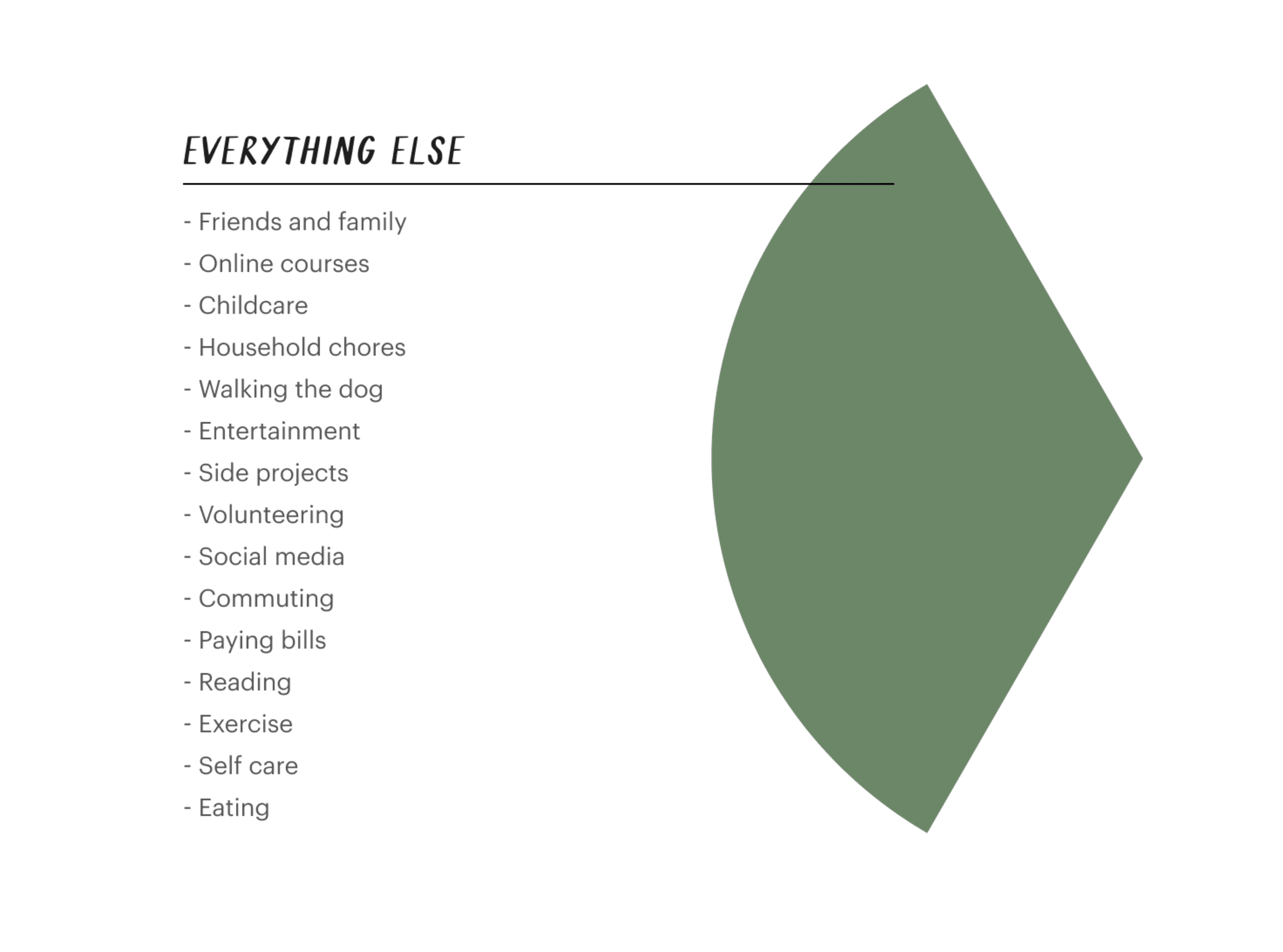
Realistically though — after childcare, family responsibilities, preparing meals, eating, tidying, paying bills, and any other need-to-do responsibilities — it’s quite a bit less. Based on a 2019 American Time User Survey conducted by the U.S. Bureau of Labor Statistics, adults had an average of 5.19 hours of leisure per day, including categories like “socializing and communicating,” “watching tv,” and “playing games”. These 5.19 hours, or less, are the space you have for anything from side projects to self-care.
Similarly to how money management asks us to budget our finances, time management demands that we budget our hours. Using these hours wisely, to live a life that’s both ambitious and balanced, means aligning your time with your priorities — whether that’s getting in shape, improving your marriage, or reading more books.
But sometimes the math just doesn’t add up. In between unexpected hiccups in our day and tasks that seemingly materialize from thin air, those five hours shrink down to three, two, one, or none at all. Rather than recognize the latent forces that whittle away our hours, we’re overcome with guilt about our inability to manage our time.
It doesn't have to be this way. We can implement time management principles to achieve our goals and get more done, while also accepting that sometimes we'll fall short of our own expectations.
This realistic guide to time management is about making the most of our hours, while avoiding overwhelm and learning to work with the constraints on your time. You'll find advice on getting a handle on where you currently spend your time, creating a realistic “time budget” to guide your daily decision-making, and translating your time budget into flexible daily and weekly plans.
Balance your (time) budget
In personal finance, balancing your budget begins with knowing where you spend your money. A financial expert might tell you to start by digging into your debit and credit card transactions, outstanding balances, and recurring payments, and any other relevant money details. They’ll probably ask you to record everything you purchase for a week or month, diligently monitoring your spend.
This kind of financial self-audit helps cultivate more awareness around where your money goes. You might be surprised to find that a whopping 20% of your income is spent on meal delivery services and restaurant takeout or that you’re spending hundreds of dollars a month on subscriptions you don’t use. From a place of greater knowledge, you can start to build a plan — a budget — to put money towards a home down payment or dig your way out of credit card debt.
A lot of us feel like we’re running a time deficit, unable to find the hours to exercise, work on our side projects, or simply slow down. We need to investigate where our time goes to solve our time management problems, finding wasted hours and funneling them into worthwhile endeavors — be it socializing or sleeping.
Complete a time audit
We’re not great at intuitively understanding where our time goes — we’re prone to overestimating how much we work and underestimating the time we spend on distractions.
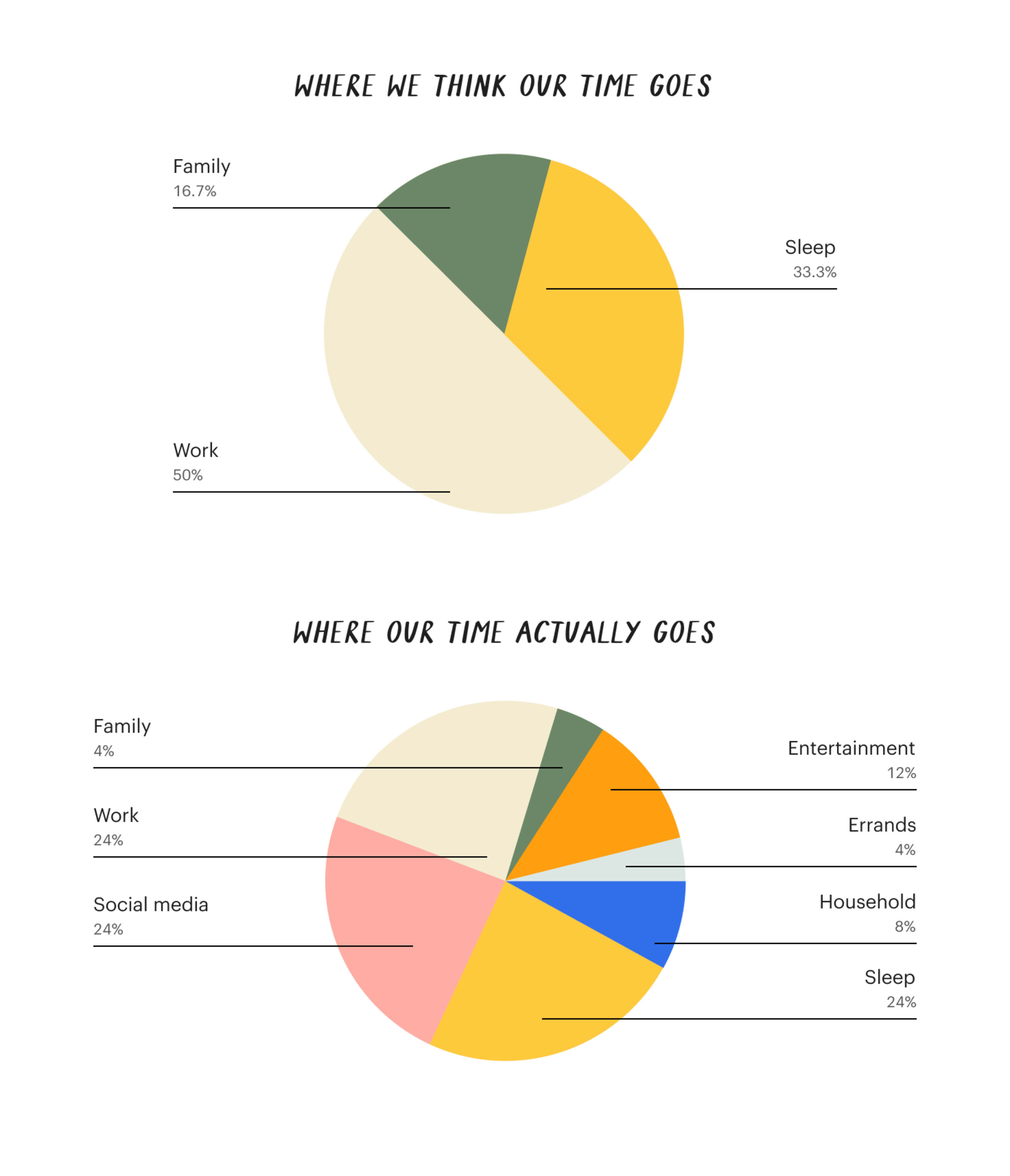
Rather than guessing at how we spend our time, follow these steps to complete a time audit:
- Select 1-3 days to perform your time audit.
- Print off the time tracking sheet below, one for each day.
- Set an hourly timer during your waking hours (e.g. 1PM, 2PM, 3PM).
- When the timer goes off at the hour, jot down what you did in the previous hour. Be honest — this time audit is for you, not your boss. If you were on Twitter while you were supposed to be working, write that down.
- At the end of your time audit period, review your time tracking sheet(s), searching for trends and then grouping your hours into specific categories (e.g. sleep, social media, work, cooking, exercise, entertainment, childcare, etc). Use the following questions to guide your review:
- What is my biggest time category? How much of my work hours are spent on focused work? Communication? Distractions?
- What do I spend most of my post-work hours doing?
- How much time do I spend on distracting activities overall?
- Am I spending an adequate time on goal-driven activities?
- How many of my hours are devoted to health and/or self care activities?
Download the time management tracker pdf.
You can conduct a time audit with any kind of timer, but you may find it easier in combination with one (or both) of these time tracking apps:
- Toggl: Track the time you spend both offline and online, on desktop and mobile. This tool integrates with Todoist (web), helping you to track how much time you spend on each task.
- RescueTime: Automate your time tracking by installing RescueTime on your desktop and mobile devices. This app logs the time you spend on websites and apps, grouping your activity into categories like Productive”, “Neutral”, and “Unproductive”. You can check your Daily Dashboard for a productivity score from 0-100.
With your time audit complete, and a greater understanding of how you spend your time, you can pinpoint areas for improvement and work towards better time management.
Determine your priorities
If you want to know your priorities, look at where you spend your time. Maybe you thought you were prioritizing learning, but your time audit revealed that days went by when you didn’t click into your online course or dive into your nightstand book stack. Time management is about making your stated priorities line up with your actual priorities.
You likely have a long list of things you want to accomplish in life. But when everything is a priority, nothing is a priority. Instead we’re overwhelmed with options, feel a lack of focus, and inevitably experience analysis paralysis. The solution is to move away from the jumble of I-should-dos to and towards a narrow list of priorities.

Zero in on your most important goals and identify the most impactful actions that will help you achieve them:
- To forge closer bonds with your children, prioritize spending quality time with them.
- To eat healthier, prioritize cooking healthy meals at home.
- To earn a degree, prioritize studying and readings.
Limit yourself to a maximum of five priorities at any given time. Pay attention to whether those priorities fall into the “work” or “life” buckets, and ensure you always have at least two in the latter — having only work priorities is a blueprint for burnout.
Prioritizing some things means de-prioritizing others. Go back to your time audit and look for activities that don’t line up with your new list. This will mean making some tough decisions, like scaling back your volunteering commitments to spend more quality time with your partner or dropping out of your friends’ fantasy football league to get your business off the ground.
Only you will know what time well spent looks like. By carefully examining your current priorities, you can intentionally decide where to spend your time.
Create your time budget
A money budget has spending allowances; a time budget has hourly allowances. After narrowing down your priorities, assign specific amounts of time to each one. Consider hourly allowances on a daily and/or weekly basis. Similar to how you would assign “$150 a month for dining out” or “$50 a month for media subscriptions”, allocate “5 hours a week for exercise”or “1.5 hours a weekday for cooking”.
| Priority | Time Allowance |
|---|---|
| Spend time with family | 2 hours/day |
| Learn how to draw | 3/hours/week |
| Cook meals at home | 1.5 hours/weekdays |
| Get in shape | 5 hours/week |
| Self-care | 4 hours/week |
If you’re unsure of the time allowance you should allocate to each of your priorities, simply choose an amount of time that you think you can realistically maintain. Parkinson’s Law states that the amount of work expands to fit the amount of time you give it. By applying time constraints and sticking to them, we might not accomplish everything we intended, but we can trade perfection for speed and complete more than we originally imagined.
Of course, budgets don’t ensure spending our money, or in this case, time, perfectly. Just as you might slip up and splurge or have an emergency that eats into your savings, you’re bound to misallocate homekeeping time to entertainment or have unexpected tasks deplete your time budget. That’s okay. The goal isn’t perfection, but awareness. There are times that events outside of your control force you to abandon your time budget, but that doesn’t mean you should give up on time management altogether. If you’re guided by your time budget, you’ll build greater awareness of the trade-offs of your choices and make more intentional decisions about your time.
Practice time blocking your day
With your priorities and time budget in place, put your time budget into action with time blocking:
“Time blocking is a time management method that asks you to divide your day into blocks of time. Each block is dedicated to accomplishing a specific task, or group of tasks, and only those specific tasks. Instead of keeping an open-ended to-do list of things you’ll get to as you’re able, you’ll start each day with a concrete schedule that lays out what you’ll work on and when.”
Here’s how to use the time blocking method:
- Choose your tool: Use a blank page of paper, a daily planner, a digital calendar, or a to-do list app.
- Create time blocks: Starting from the first thing in the morning, add time blocks dedicated to specific tasks ranging from 15 minutes to two hours. . For example, if you have 1.5 hours dedicated to cooking each day on your time budget, add a time block on your calendar from “5:00PM-6:30PM”. Ensure your time blocks are specific and span your entire day (e.g.“breakfast” from 7:00AM-7:30AM, “file expense reports” from 2:00PM-3:00PM and “reading” from 10:30PM-11:00PM).
- Adjust accordingly: When ad-hoc tasks emerge and/or certain tasks take longer than you anticipated, simply adjust your time blocks. Shift time blocks to later in the day or postpone them to later in the week.
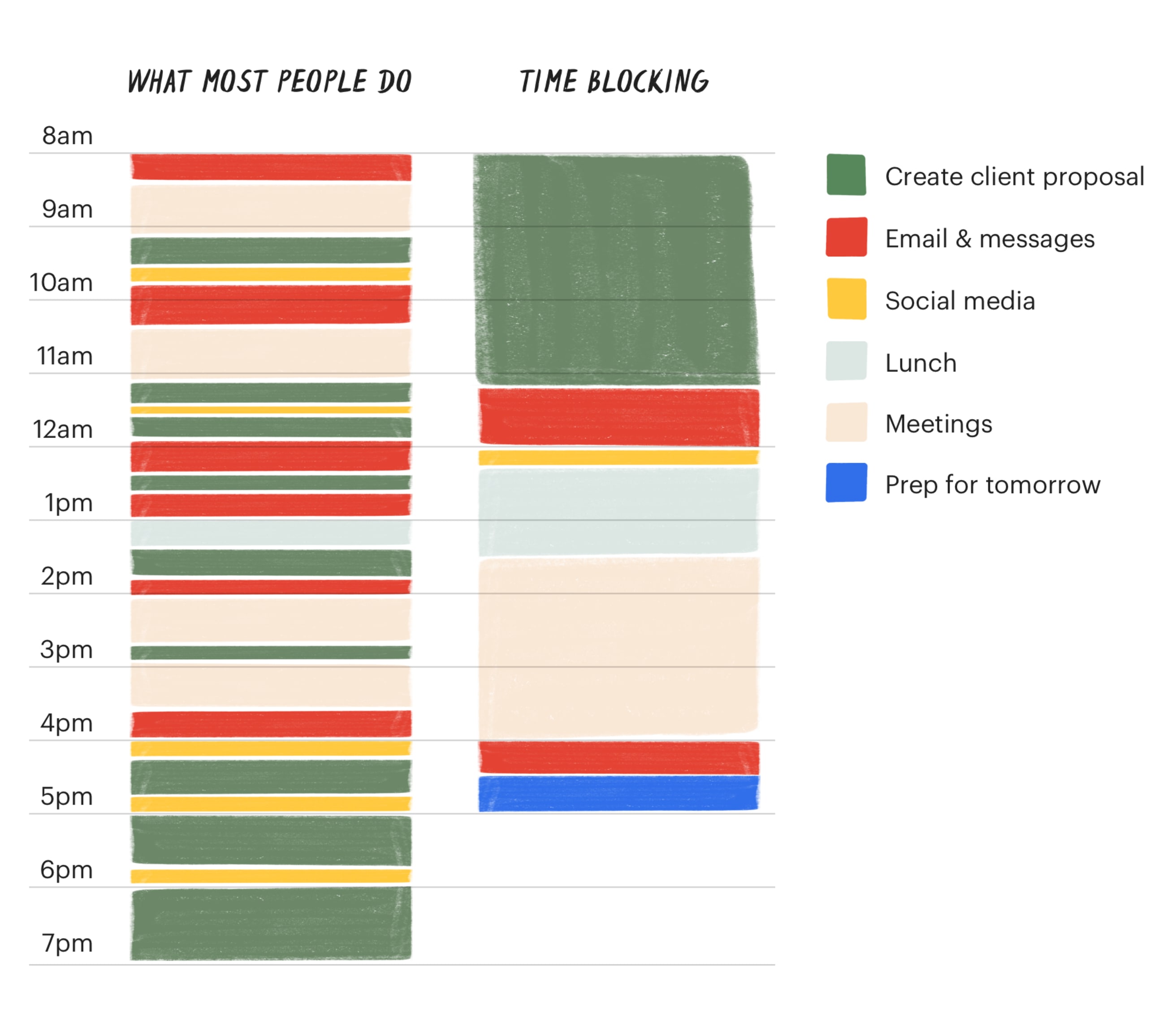

Scheduling every hour of your day, carving out an hour-long block for lunch and another for emails, might feel excessive at first. However, time blocking is an effective way to grasp the limits of your time and better use the hours you have.
Plan ahead
When we start our days without a game plan, we tend to be reactive. Rather than moving strategically from priority to priority, we haphazardly dip into our inboxes with each email ping or focus our energy on urgent but unimportant tasks.
The best remedy for reactivity is planning ahead. When we pause and think about our priorities before diving into the deep end of our days, we can approach our hours ahead with intention and focus.
Planning ahead is a cornerstone of time management — we suggest both weekly and daily planning sessions:
- Plan your day: Whether you opt for time blocking or another productivity method entirely, it’s worth planning your day in advance. For best results, complete your daily planning the night before, carving out time for everything from sharing a departmental update at work to phoning your grandparents.
- Plan your week. Implement a weekly review where you look back at the previous seven days and plan for the ones ahead. Ask yourself a slew of questions to help with planning: What did I want to accomplish but couldn’t last week? What prevented me from putting my priorities first? What is the most impactful thing I want to accomplish in the coming week?
For many, planning can become a time cost in itself, leading to more stress. Keep these three rules in mind for daily and weekly planning:
- Limit daily planning to 15 minutes and weekly planning to 60 minutes
- Leave buffer room in your days for unexpected tasks
- Be open to moving to-dos around if you need to change your plans
Plans aren’t meant to ensure a perfect day. Instead, think of your daily plan as a compass, guiding you in the right direction and even if you end up a few degrees off due north.
Create more time in your day
Effectively using the hours you have is only one side of the time management equation. On the other side of this math problem? Strategies to create more hours in your day. While you can’t add a 25th hour to the day, there are ways to make 24 hours feel like a whole lot more.
Focusing
Work accounts for one of the biggest chunks of our day, taking up at least eight hours for most. However, as you may have discovered from your time audit, our working hours aren’t always spent working.
Distractions and interruptions — both external and self-inflicted — whittle down our actual work time to 7, 6, 5, 4, or even 3 hours, but our workloads persist just the same. Instead of fighting distractions at the source, we extend our workdays to accommodate.
Mihaly Csikszentmihalyi, a psychologist known for recognizing and naming the concept of “flow”, writes about the value of focused and directed attention in his book Flow: The Psychology of Optimal Experience:
“The mark of a person who is in control of consciousness is the ability to focus attention at will, to be oblivious to distractions, to concentrate for as long as it takes to achieve a goal, and not longer. And the person who can do this usually enjoys the normal course of everyday life.”
Direct your days with greater intention and find better balance with these tips for embracing focus and finding flow:
- Create your ideal work environment: It’s hard to work in a noisy and distraction-prone environment. Whether it’s overflowing piles of paper in your workspace or your colleagues shouting your name across your open-floor plan office, it’s challenging to find flow and stay there. Create a workspace that’s conducive to focus: ensure your desk is clutter-free and put on headphones to signal that you’re in concentration mode. If possible, ask to work from home and optimize your own home office.
- Use site blockers: Cut yourself off the steady drip of social media, incoming news, and online window shopping. Use site blockers like Self Control (macOS) and Freedom (Windows, MacOS, iOS, Android) to restrict access to distracting websites during your working hours.
- Avoid context switching: Between clicking through multiple tabs and attempting to work-and-Slack at the same time, context switching is a tax on your time and attention. Avoid paying this fee with science-backed strategies from our article, How Context Switching Sabotages Your Productivity.
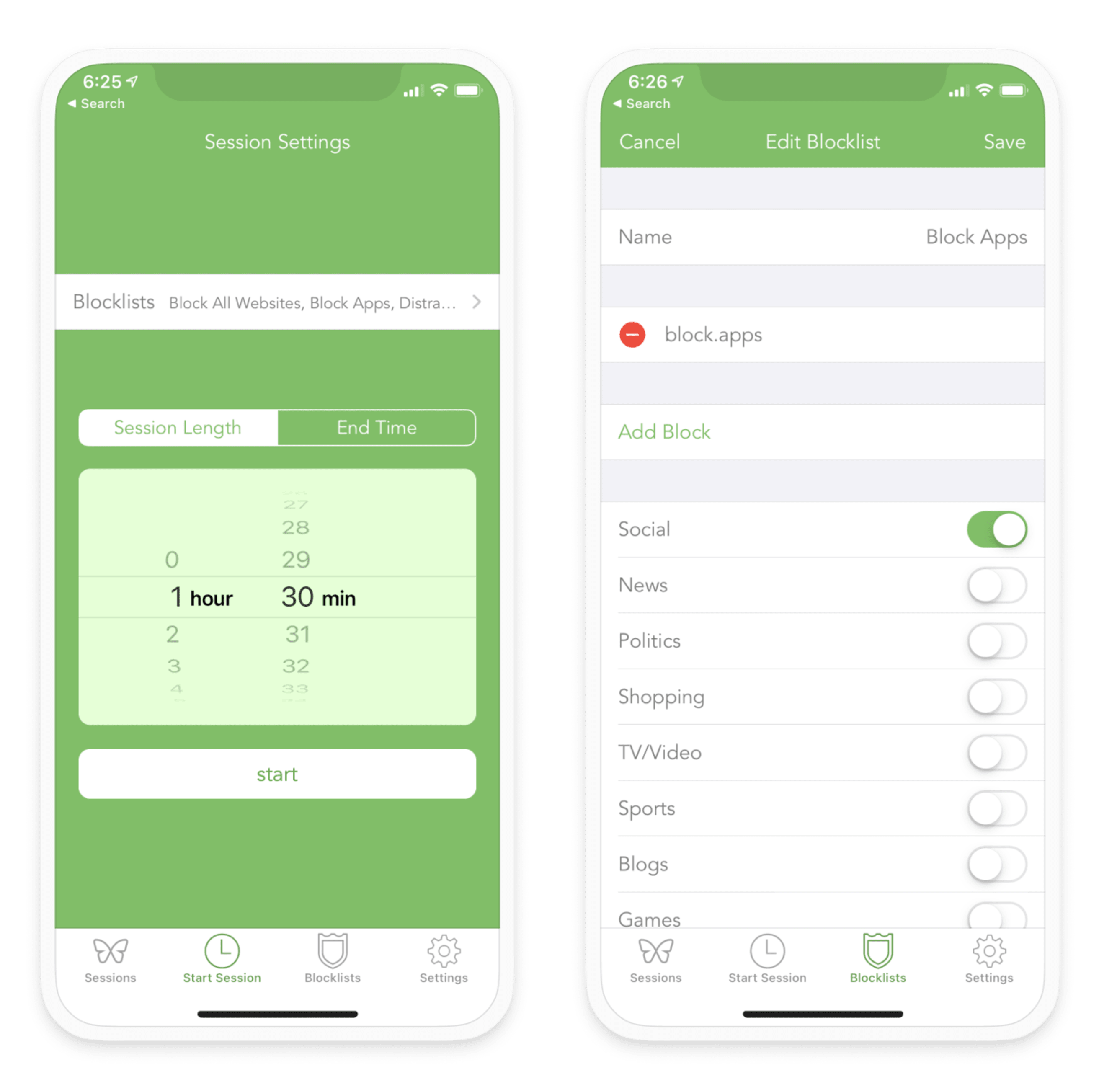
Bundling
Not to be confused with multi-tasking, task bundling creates more time in your day by combining complementary tasks. While watching television as you work is probably counterproductive, running errands while spending time with your kids helps you prioritize more than one thing at time.
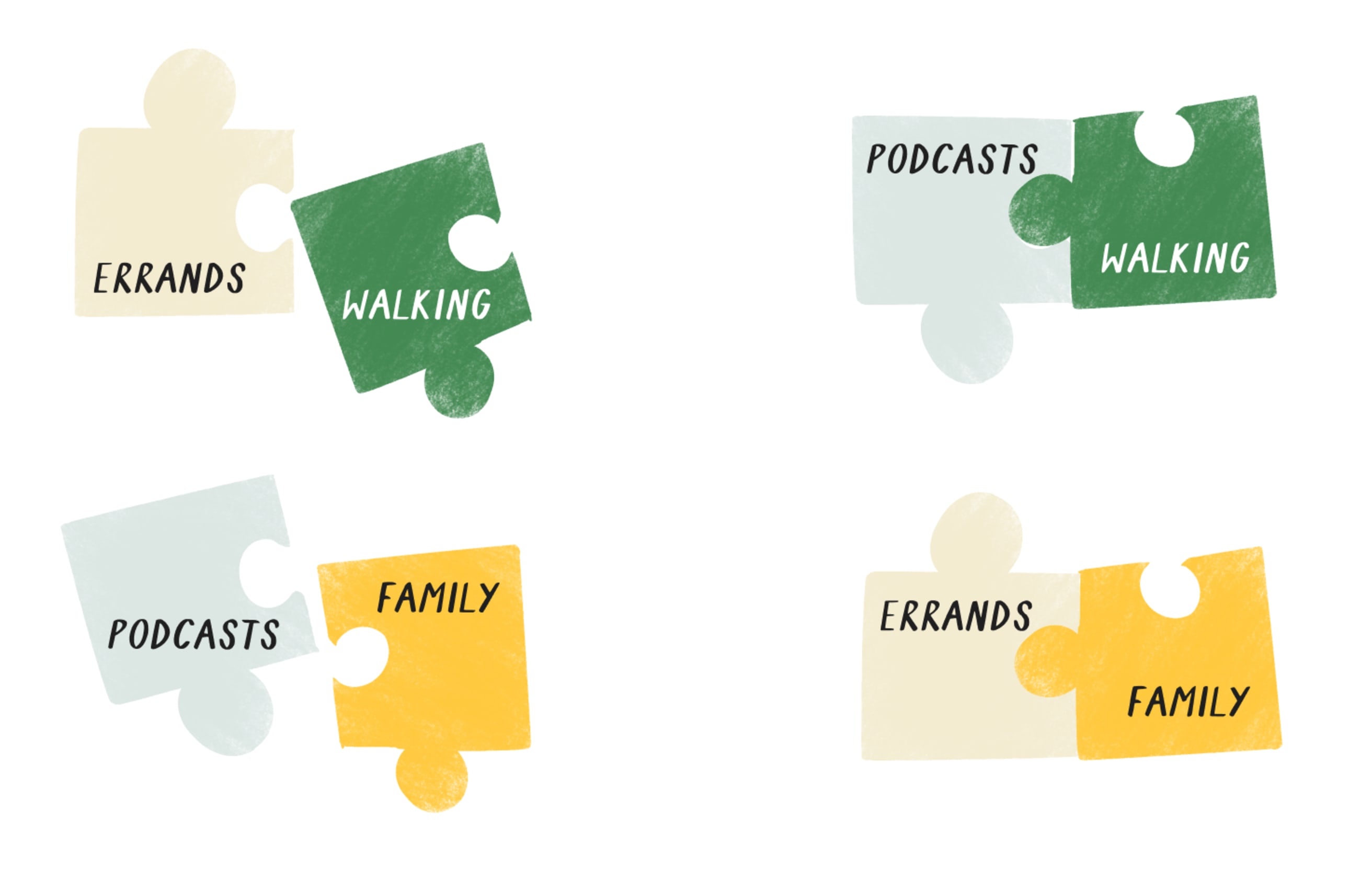
Similarly, walking to stay healthy and unwind can be done as you listen to podcasts, exploring your intellectual curiosities or laughing along with your favorite comedians. Think about the tasks you can combine to check off two tasks at once.
Delegating
In Laura Vanderkam’s 168 Hours: You Have More Time Than You Think, she suggests that one important facet of time management is focusing squarely on your core competencies:
“An individual’s core competencies are best thought of as abilities that can be leveraged across multiple spheres. They should be important and meaningful. And they should be the things we do best and that others cannot do nearly as well.”
Rather than squandering your time on the tasks you’re mediocre at or that could be completed by someone else, zero in on what you’re excellent at. Outside of those tasks, try to delegate as much as possible:
“People who get the most out of life spend as much of their time as possible on these core competency activities, and as little as possible on other things.”
Here are the type of tasks to consider delegating:
- Non-core competency work: Delegate work that falls outside of your core competencies to your direct reports or other willing members of your organization. If you’re an individual contributor with limited delegation ability, make the case to your manager that the company would be better served if you focused more of your time on your core competencies.
- Administrative tasks: If you’re in a position to hire a personal or virtual assistant, consider handing off tasks like travel booking, bill payments, expense reports, and other time consuming to-dos.
- Household chores: If you’re struggling to keep on top of cleanings and organizing tasks at home and have the income to spare, hire a cleaner to come into your house 1 to 2 times per month. If that’s not the case, have a conversation with your roommates, partner, and/or kids about everyone doing their fair share of household chores. Create a cleaning schedule and put it in a central location for visibility and accountability.
Delegating is about letting go of responsibilities in order to take back control of your schedule. The hours you save can be directed to what’s most important, not what’s most urgent.
Saying “no”
While letting go of tasks is one strategy, perhaps the better strategy is never taking on a task in the first place. It’s tough to complete the monthly finance report when you’re getting pulled into brainstorming sessions or being sent ad-hoc work requests, but saying “no” goes against all of our social human impulses.
Turning down requests — whether they’re from coworkers, family, or friends — is hard, but it’s possible to do without feeling guilty, rude, or selfish. Try out these lines for respectfully bowing out meetings, turning down additional workload, and opting out of opportunities.
Declining meetings:
Hi [Their Name],
Thanks for inviting me to participate in this meeting!
Unfortunately, I have a few competing priorities at the moment and think my time would be better spent focusing on x. While I’m confident a decision can be reached/the project can proceed without my input, I’m happy to provide any input you need asynchronously before [date] if it would help,. Alternatively, I have some time in my schedule to meet for 15 minutes on Thursday or Friday at 1PM.
Thank you,
[Your Name]
Declining additional workload:
Hi [Their Name],
This looks like an interesting project! While I would normally be keen to take this on, I’m currently at capacity working on x and don’t have the bandwidth to prioritize this task for the deadline.
Would it be possible to shift this deadline?
If not, what would be the best thing on my plate to deprioritize to get this done?Thank you,
[Your Name]
Declining new opportunities:
Hi [Their Name],
Thank you for thinking of me for this opportunity, I’m incredibly flattered! Unfortunately, with ongoing projects and priorities, I won’t be able to participate.
Are you acquainted with x? They would be a great person to get in touch with for this — I’m happy to make an introduction.
Either way, let’s keep in touch as I would love to collaborate on something in the future when my schedule allows it.
Thank you,
[Your Name]
Default to saying “no”, when a new task or opportunity isn’t aligned with your current priorities and would take time away from your current areas of focus.
Automating
While technology can steal our time, it can also give it back. Use automation to cut back on the time you spend on manual work and add back those minutes, or even hours, to your day.
- Task management: Add tasks from anywhere to your digital to-do list with automation apps. For instance, use Automate.io to automatically turn new Shopify orders into Todoist tasks. Or use Zapier to add new JIRA issues as Todoist tasks or add new starred emails in Gmail as Todoist tasks. Try centralizing all your tasks with a tool like Pleexy.
- Banking and finances: set up automatic bill payments so you never miss brush up against a payment deadline. Also consider automating your savings and investments, transferring a pre-set amount of money from your checking account each month.
- Email follow-ups: Free up mental energy and time by using an email system that lets you schedule emails and sends you reminders about following up when you don’t hear back (e.g Boomerang for Gmail).

By embracing automation, you can save time that you can funnel back into higher priority tasks — whether that’s working on a side project or spending time with your siblings.
Relaxing
It’s counterintuitive to take time off to create more of it, but that’s exactly the way you should think about time away from work. Stress from overwork undermines your health, your wellbeing, and your work.
According to the Mayo Clinic, common side effects of stress include “anxiety”, “lack of motivation or focus'', and “feeling overwhelmed”. Hardly the optimal conditions for getting things done and staying in focus mode. On the contrary, these feelings can lead us down the path to procrastination, too stressed and overwhelmed to even get started.
The conditions that lead to overwork aren’t entirely in your control, but there are things you can do as an individual to avoid the side effects of stress and proactively keep overwhelm and burnout at bay:
- Take breaks: As a rule of thumb, get up from your desk for five minutes every hour. Feel free to adjust your work:break ratio — as long as you take them. While on a break, avoid scrolling social media. Instead, do a quick stretch, go outside, or chat with a friend or colleague.
- Have an official end time to your workday: Commit to leaving the office or closing up your laptop at a specific time each day, rather than answering emails into the evening or taking work calls at night. Consider a work shutdown ritual that includes reviewing your to-dos and tidying your desk.
- Book off vacation time: Take advantage of your vacation days and book regular time off to disconnect from work each year. If you don’t have somewhere to go, consider a staycation where you explore your city or simply unwind at home. If you’re a manager, be especially cognizant of setting a good example for your reports and using your time off.
- Exercise: Focus some of your time on fitness. Set aside hours for going to the gym, walking outside, or anything else to get or stay in shape. To bundle socializing and exercise, join a recreational sports league or go hiking with friends.
- Sleep: Prioritize getting enough rest in the evening, aiming for at least 7.5 hours of sleep each night. When we’re rested and refreshed from a good night’s rest, managing our time and directing our focus feels a lot easier.
When you’re crafting your to-do list or time blocking your day, keep rest and relaxation top of mind. However, be cautious of over-scheduling your free time — leisure can come to feel like a chore with too much planning, another task on our long list of obligations.
Use the right tools for time management
There’s a host of tools you can use to help you on your time management journey. While there are a range of paper planners you could opt for, we’ll focus on simple digital tools that will help you stay on top of your tasks each day.
To-do list
Use a digital to-do list app, like Todoist, to keep close track of what you need to do in the day and when you’ll do it. Estimate how long each task will take, adding a time (e.g. 10:00 am) and/or label (e.g. @60min) to each one. Integrate Todoist with your Google Calendar, to see your tasks on your calendar and your calendar events on your to-do list.
To get the most out of a to-do list for time management, add everything to your list — from a coffee with a friend to tidying the living room. Adding in both personal and work tasks will give you visibility into the full scope of what you need to do each day.
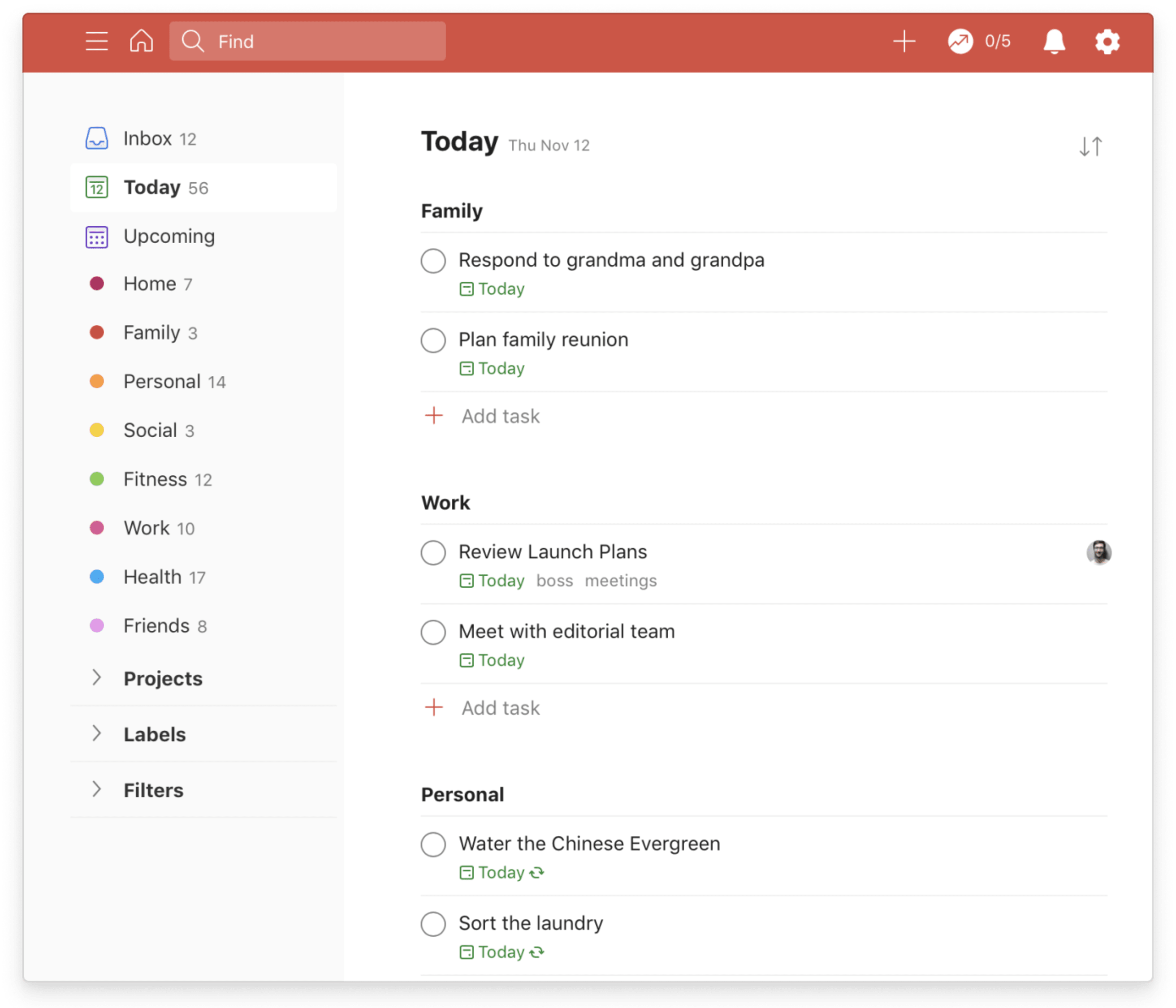
Calendar
Use a digital calendar app that gives you clarity on what you’re doing hour-to-hour. Alongside meetings and events, add in time blocks of tasks you’ll complete throughout the day (see the “Time blocking” section earlier in the article).
We recommend the following calendar apps:
Regardless of which tool you opt for, monitor your calendar closely to ensure that the blocks taking up your days reflect your goals and priorities.
Time tracker
Beyond your time audit, it’s helpful to keep time tracking as part of your arsenal of time management strategies. Staying aware of where our time goes is useful for knowing we’re on the right track. It can also help us re-aligning our time with our priorities when we stray from focus.
Toggl (which also has a handy calendar view) and RescueTime, recommended earlier for your time audit, are excellent tools for continuous use.

There’s a big, glaring limitation to time management that most productivity experts gloss over: your time isn’t entirely under your control. Traditional time management suggests that if we plan perfectly and prioritize right, we can use our hours to live exactly the life we want. We can have great relationships, get promoted at work, and fit in five workouts a week. While this logic isn’t untrue, it’s incomplete at best. At worst, it sets unrealistic expectations that set us up to feel guilty and inadequate when we fail.
Even with the best of intentions, there will be days or even weeks that pass when we wonder where our time went. When a child's temper tantrum takes over your morning or a looming deadline means pulling an all-nighter, our time budgets become irrelevant and the idea of balance feels quaint.
But rather than being racked with guilt about our inability to manage our time, it’s better to recognize time management for what it is: a system for improvement, not perfection. Defining our priorities is valuable even if we can’t always place them at the top of our list. Recognizing where our time goes is worthwhile, even if we can’t quite use our hours the way we would like. A daily plan is worth creating, even when we only make it part-way through.
By continuously returning to time management principles and implementing strategies for finding focus and ditching distraction, we can fill our minutes, hours, and days with meaningful work and memorable life moments. At least, more of the time.

